Did you know that there’s more than one seed starting method? Yes, it’s true, and they each have their own unique purpose. In this post, I’m going to tell you all about 3 sowing techniques, the pros and cons, and which seeds work best for each method.
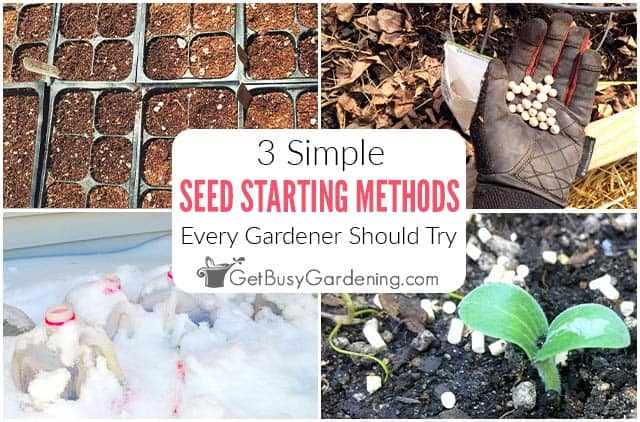
The biggest mistake I made as a new gardener was using one sowing method to start ALL of my seeds – and that was planting them inside of my house.
After years of painful trial and error, and experimenting with other techniques, I finally figured out that combining the three common seed starting methods is SO MUCH easier.
Guess what, there is not one perfect method for all types of seeds; they each have pros and cons.
So, rather than forcing one technique on all of your seeds, you should try all three types of sowing.
Once you get the hang of mixing two or three of these different methods, growing seeds will become much easier for you too!
How Many Types Of Seed Sowing Techniques Are There?
There are actually several different seed sowing techniques that are used in agriculture.
But for us home gardeners, there are really only three: starting them indoors, direct sowing, and winter sowing.
3 Seed Starting Methods To Try
Contrary to popular belief, there is no one-size-fits-all seed starting method. Each of these three has their own unique purpose, as well as pros and cons. Below I will discuss each one in detail.
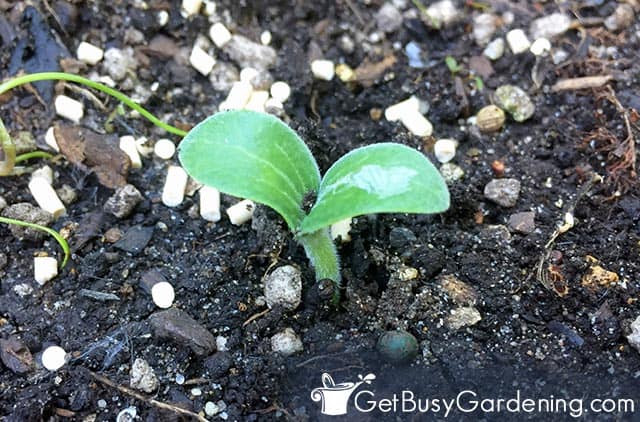
Method 1: Starting Seeds Indoors
Starting seeds indoors is probably the first one that people think of, and it’s the most common option. With this method, you plant them inside your house several weeks before they can be moved to the garden.
Pros
- You’ll get a head start on plants that need a longer growing season.
- Seedlings have a few extra weeks to mature, which means they’ll flower or produce food faster.
- Since you control the environment, there’s no worry of losing your starts to pests or harsh weather conditions.
- It’s easier to get a consistent germination rate.
Cons
- Starting them inside can be messy and it takes up space in your house.
- You’ll need to buy some supplies and equipment.
- It takes extra care to get the seedlings to survive long enough to be transplanted into the garden in the spring.
- There are some extra steps you need to take to get your starts ready for life outside.
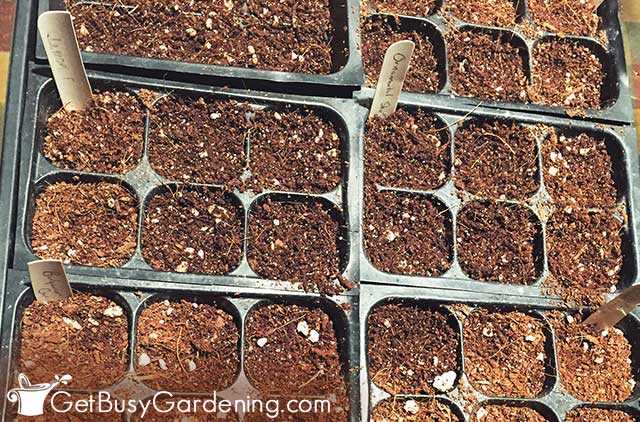
Method 2: Direct Sowing
With the direct sowing method, you plant your seeds right into the ground. It’s most commonly done in the spring, but some varieties can be sown into the garden in the fall.
Pros
- This method is easy, and there’s no mess.
- All you need are the seeds; you don’t have to buy any special equipment.
- You won’t have to transplant anything.
- Seedlings are usually hardier and more robust.
Cons
- Plants have less time, and some may not mature before frost hits in the fall.
- They are exposed to the elements, can be washed away by heavy rain, or be eaten by pests.
- A late spring freeze could destroy your tender starts.
- It’s more difficult to control germination.

Method 3: Winter Sowing
Winter seed sowing is a technique that has gained popularity over the past decade. With this method, you plant them in plastic containers that act like mini greenhouses.
Then you put them outside in the snow and freezing cold, and leave them there until they germinate in the spring.
Pros
- Since they go outside, the containers don’t take up any space in the house.
- You don’t need to buy any special equipment, just the seeds and potting soil.
- Seedlings don’t need to be hardened off.
- You can sow them much earlier than you could inside or in the garden.
Cons
- Since you still have to do everything inside the house, it can be messy.
- Collecting and preparing all of the mini greenhouses can be time consuming.
- They could take longer to sprout, and some may not mature quickly enough.
- Maintenance can be a bit of work once the weather warms up in the spring.
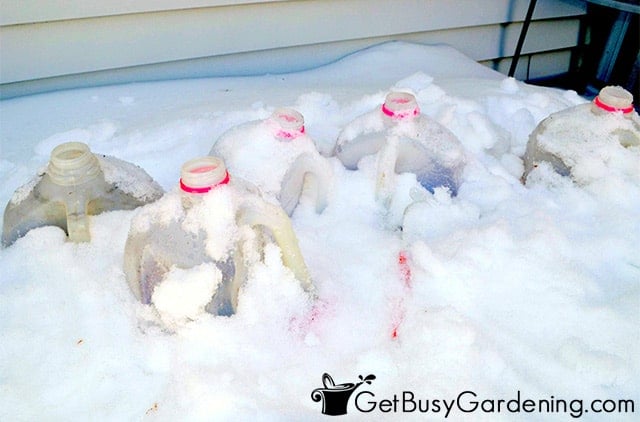
Which Method Is The Best?
I know what your next question is going to be – which seed sowing method is the best? That’s easy, none of them are!
As you can see from the lists above, each has their own unique pros and cons.
The one you choose totally depends on what you’re planning to grow. So, it’s important to know which will work (or won’t work) with each seed sowing technique.
Choosing The Best Seeds For Each Method
Below I will give you some tips on how to figure which seeds work best for each sowing method.
Once you understand what to look for, you’ll easily be able to choose the best technique for each type you want to plant.
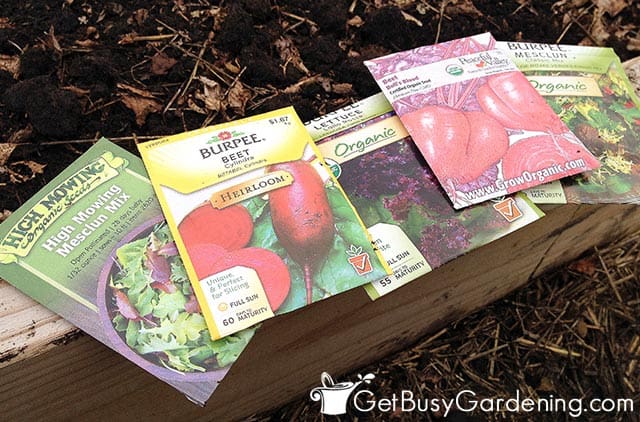
Best Seeds To Start Indoors
In general, seeds that are slow to germinate, need warm soil, or those that require a long season are all good candidates for this sowing technique. So, look for these keywords on the packet…
- Requires warm soil to germinate
- Plant seedlings after danger of frost
- Start indoors early
- Slow to germinate
To help you out, here’s a list of some of the easiest ones to start indoors.
Best Seeds To Direct Sow
As a general rule of thumb, direct sowing should be used for seedlings that don’t like to be transplanted, fast growing flowers and vegetables, and root crops. Look for these clues on the packet…
- Sow outdoors in the fall or early spring
- Direct sow
- Do not transplant
Get my list of some of the easiest ones to direct sow here.
Best Seeds To Winter Sow
The best types to use with the winter sowing method are those that are cold hardy or require stratification.
A few examples are perennials, or frost tolerant vegetables, herbs, annuals and flowers. Some keywords to look for…
- Self sowing
- Requires cold stratification
- Cold hardy
- Perennial
For more details, check out my list of the best ones to use for winter sowing.
There is no such thing as one perfect sowing method for all types of seeds. The secret to success is learning how to combine two or three of these techniques, so you can easily grow any type of plant you want from seed.
If you want to learn how to mix these different methods to make it super easy, sign up for my Online Seed Starting Course. It’s a comprehensive, self-paced online training that will teach you everything you need to know to be successful. Enroll and get started today!
Otherwise, if you’re just looking for a quick-start guide, then my Starting Seeds Indoors eBook is exactly what you need.
More About Growing Seeds
- 13 Easy Annual Flowers To Grow From Seed
- 23 Easiest Vegetables To Grow From Seed
- How To Grow Castor Bean Plant From Seed
What about you? Leave a comment below and tell me which seed starting methods you’ve tried, and which one(s) you prefer.
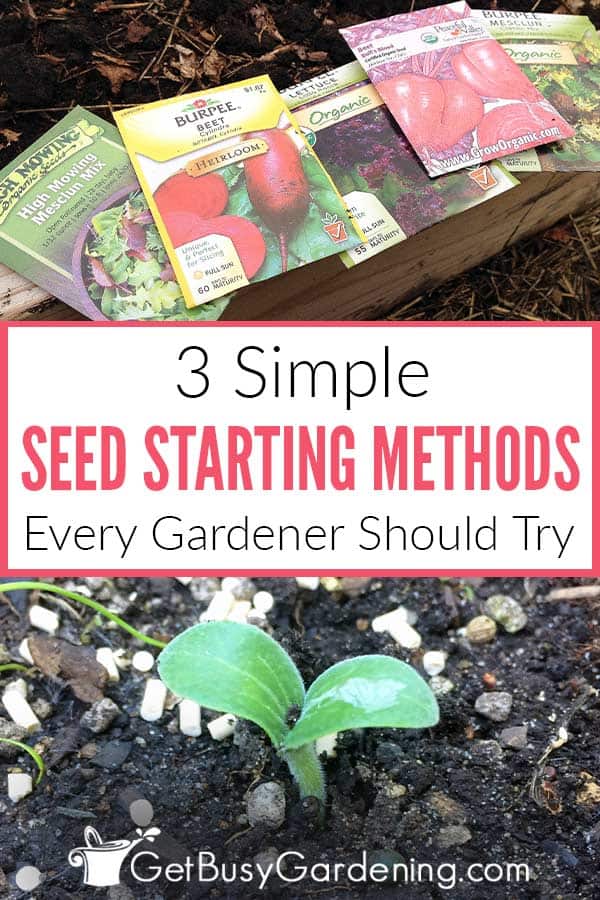
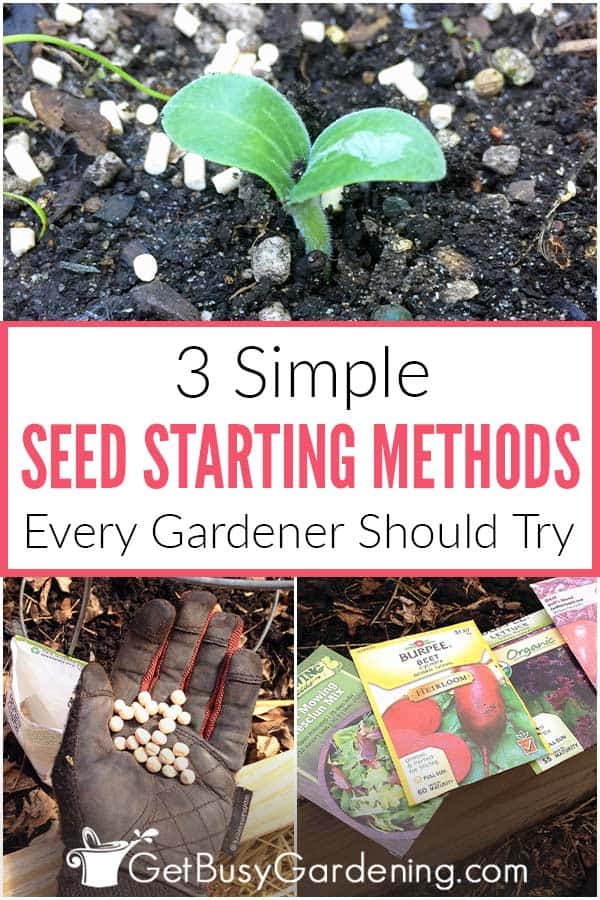


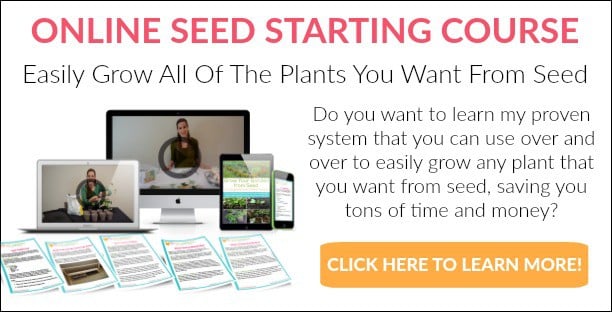

Trixie says
I tried winter sowing once and wasn’t too thrilled with the results. — could have been the choice of seeds/plants, but less than half germinated. It’s important to mention that the soil in the containers should never be allowed to dry out, so there is some maintenance involved in this “low maintenance” approach because you periodically have to add water and/or snow to the tops. Also, it can be a bit awkward removing the plants from the containers once they are ready to be moved to their permanent spot in the garden. If you are opting for an outdoor seed starting method, I would just go with direct sowing instead.
Amy Andrychowicz says
Thanks so much for sharing your experience trying the different techniques.